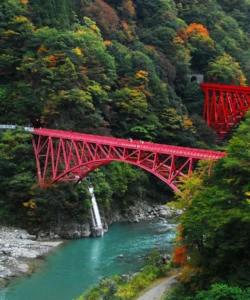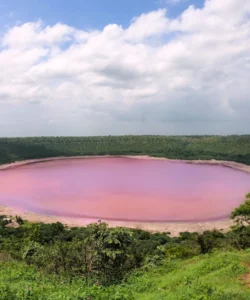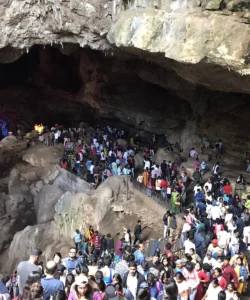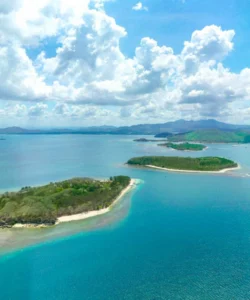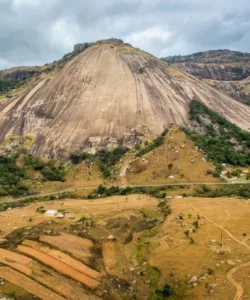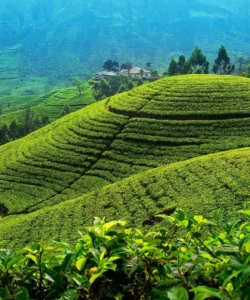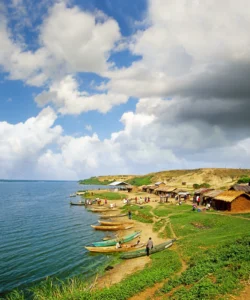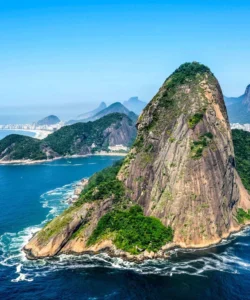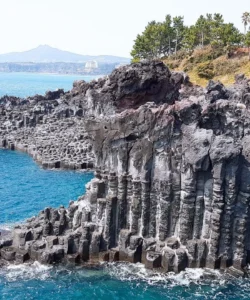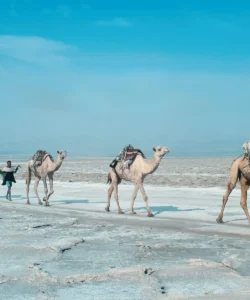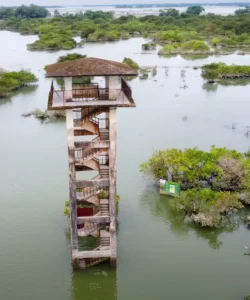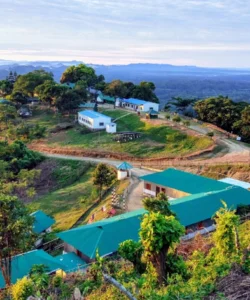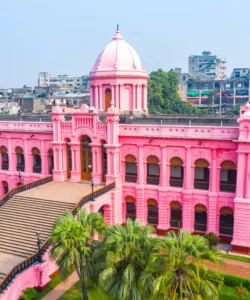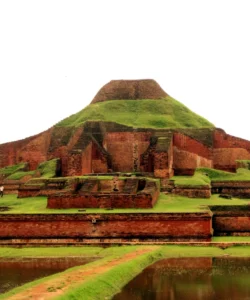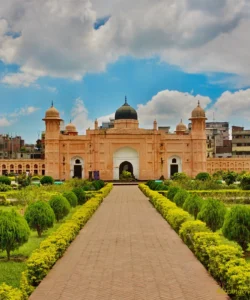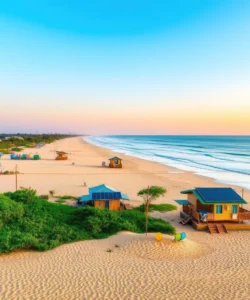The Baltoro Glacier is a colossal and awe-inspiring natural wonder located in the Gilgit-Baltistan region of Pakistan. It is a defining feature of the Karakoram mountain range and is one of the longest glaciers outside the Earth’s polar regions, famous for being the gateway to some of the world’s highest and most challenging peaks, including the formidable K2.
Name: Baltoro Glacier (Balti: བལྟོརོ་གངས།, romanized: Baltoro gangs, lit. ‘Bone breaker’; Urdu: بالتورو گلیشیر)
Address: Shigar District, Gilgit-Baltistan, Pakistan. It flows through the Karakoram mountain range, bordered by the Baltoro Muztagh to the north and east, and the Masherbrum Mountains to the south. The main town and starting point for expeditions is Skardu.
How to Get There:
Accessing the Baltoro Glacier is an arduous and demanding undertaking, primarily reserved for experienced trekkers and mountaineers. It requires significant physical fitness, proper gear, and often involves permits and licensed guides/agencies.
- By Air to Skardu (SKDU): The most common way to begin the journey is to fly into Skardu Airport (SKDU). Skardu has direct flights from Islamabad, Pakistan’s capital, which is the main international gateway. Flights to Skardu are highly weather-dependent and can be delayed or canceled.
- By Road to Skardu: The Karakoram Highway offers a scenic but long and challenging road journey from Islamabad to Skardu. This route is typically chosen if flights are unreliable or for those seeking a longer road adventure.
- From Skardu to Askole: From Skardu, trekkers take a 4×4 vehicle to Askole, a remote village at the end of the motorable road, which serves as the traditional starting point for the trek into the Baltoro region. This drive can take several hours through rugged valleys.
- Trekking to the Glacier: The journey to and along the Baltoro Glacier itself is a multi-day trek (typically 10-14 days round trip to Concordia/K2 Base Camp).
- The trek involves navigating challenging terrain, including rocky trails, moraines (debris-covered ice), and sometimes crossing swollen rivers or glacial streams.
- There are no permanent villages or shops along the trekking route. All supplies, equipment, and camping gear must be carried by porters.
- Permits: A special Mountaineering/Trekking Visa and trekking permit are mandatory for foreigners. These can take several weeks to obtain and must be arranged well in advance through a licensed trekking company in Pakistan.
- Camping: Accommodation throughout the trek is exclusively by camping.
Best Time to Visit:
The best time for trekking the Baltoro Glacier and visiting K2 Base Camp is during the short summer season, from June to mid-September. During this period, the weather is relatively more favorable, with higher chances of clear skies and less snow on the high passes, making trekking feasible. However, even in summer, weather conditions can be unpredictable, with possibilities of rain, snow, and plunging temperatures, especially at night and at higher altitudes.
Landscape and Architecture:
The Baltoro Glacier’s “architecture” is purely natural, a magnificent display of colossal ice and rock, sculpted by immense geological forces.
- Massive Valley Glacier: The Baltoro Glacier stretches for approximately 63 kilometers (39 miles) in length, making it one of the longest glaciers outside the polar regions. Its trough is incredibly wide, often 2-3 kilometers across.
- “Throne Room of the Mountain Gods” (Concordia): The glacier’s most famous intersection is Concordia, where the Baltoro Glacier meets the Godwin-Austen Glacier (flowing from K2). This area is famously known as the “Throne Room of the Mountain Gods” because it offers a spectacular 360-degree panoramic view of four 8,000-meter peaks (K2, Broad Peak, Gasherbrum I/Hidden Peak, Gasherbrum II) and numerous other towering 7,000-meter peaks, creating an unparalleled amphitheater of giants.
- Surrounded by Giants: The glacier is enveloped by an incredible concentration of the world’s highest mountains within a small radius. Notable peaks include:
- K2 (Mount Godwin Austen): The world’s second-highest mountain (8,611m / 28,251ft), which rises majestically from the Godwin-Austen Glacier that feeds into the Baltoro.
- Broad Peak: The 12th highest peak (8,047m / 26,398ft).
- Gasherbrum I (Hidden Peak): The 11th highest (8,080m / 26,509ft).
- Gasherbrum II: The 13th highest (8,035m / 26,362ft).
- Trango Towers: A family of spectacular granite rock towers known for offering some of the world’s largest cliffs and most challenging big-wall rock climbing routes.
- Masherbrum (K1): The 22nd highest peak (7,821m / 25,659ft).
- Debris-Covered Surface: Much of the Baltoro Glacier’s surface is covered with a thick layer of rock debris (moraines) from the surrounding mountains. This gives it a dark, rugged appearance in many sections, contrasting with the pure white icefalls where tributary glaciers meet the main trunk.
- Glacial Features: The moving ice has carved striations on surrounding country rocks, formed depressions that create numerous glacial lakes, and generated dramatic icefalls and crevasses (which require careful navigation).
- Source of Rivers: The Baltoro Glacier is the source of the Braldo River, which in turn flows into the Shigar River, a tributary of the mighty Indus River, playing a vital role in the region’s hydrology.
- No Permanent Human Architecture: There are no permanent human settlements or significant built structures on the glacier itself or along the trekking route beyond temporary campsites set up by expeditions. The “architecture” is purely geological.
What Makes It Famous:
- Gateway to the World’s Highest Peaks: Baltoro Glacier is globally famous as the trekking route and base for K2 (the world’s second-highest mountain) and other 8,000-meter peaks like Broad Peak and the Gasherbrum group. This concentration of high peaks makes it an unparalleled mountaineering and high-altitude trekking destination.
- Concordia: “Throne Room of the Mountain Gods”: The iconic confluence of glaciers known as Concordia offers a unique and breathtaking 360-degree panorama of multiple 8,000-meter peaks, making it one of the most spectacular mountain amphitheaters on Earth.
- One of the Longest Glaciers Outside Polar Regions: Its immense length (63 km) solidifies its status as a major global glacier, drawing attention from glaciologists and adventurers alike.
- World-Class High-Altitude Trekking: The Baltoro Glacier trek is renowned as one of the finest and most challenging high-altitude scenic treks in the world, attracting experienced trekkers who seek an extreme wilderness experience amidst giants.
- Raw, Untamed Wilderness: The region’s extreme remoteness, harsh climate, and lack of developed infrastructure contribute to its fame as one of the last truly wild and untouched high-mountain environments.
- Geological Significance: The glacier’s powerful erosive action has carved dramatic troughs, valleys, and left behind unique features like the Trango Towers, showcasing incredible geological processes.
- Crucial for Mountaineering History: It has been the staging ground for countless historic mountaineering expeditions to the highest peaks, intertwined with stories of human endurance and triumph.
Differences from Some Other Wonders:
- Primary Identity as a Glacier: While the Himalaya include glaciers, the Baltoro Glacier is famous specifically as a massive, flowing body of ice that acts as a natural highway and geographical centerpiece, rather than a single mountain peak (like Everest or K2 themselves) or a mountain range.
- Concentration of Extreme Heights: While the Himalaya globally contain the highest peaks, the Baltoro region (especially around Concordia) has an unparalleled concentration of 8,000-meter peaks within a compact area, offering a unique “amphitheater” view of giants that is not replicated elsewhere.
- Trekking On the Glacier: Unlike many mountain treks that follow trails alongside glaciers, the Baltoro trek involves significant portions of walking on the surface of the glacier itself (albeit often debris-covered), providing a unique and challenging terrain experience.
- No Permanent Human Habitation/Culture: While the Himalaya have rich indigenous cultures (Sherpas, Ladakhis), the Baltoro Glacier itself is a high-altitude wilderness with no permanent human habitation or traditional cultural sites directly on the glacier. The human element is solely centered around the challenging expedition and the porters who support it.
- Extreme Logistics and Self-Sufficiency: The requirement for multi-week self-sufficient expeditions, relying on extensive porter support for everything (food, tents, equipment), sets it apart from more developed trekking routes with tea houses or lodges (like parts of the Everest Base Camp trek in Nepal).
- Geological and Alpine Focus: Its primary appeal is for those interested in extreme alpine environments, glaciology, and mountaineering challenges, rather than general tourism or cultural immersion, which is common in lower Himalayan regions.
- Part of the Karakoram (Distinct from Himalaya Proper): While an extension of the broader Himalayan system, the Karakoram Range has a distinct geological and climatic character, known for its extreme altitudes and more arid, jagged landscape compared to the wetter, greener parts of the Himalaya.
Baltoro Glacier Photos:































